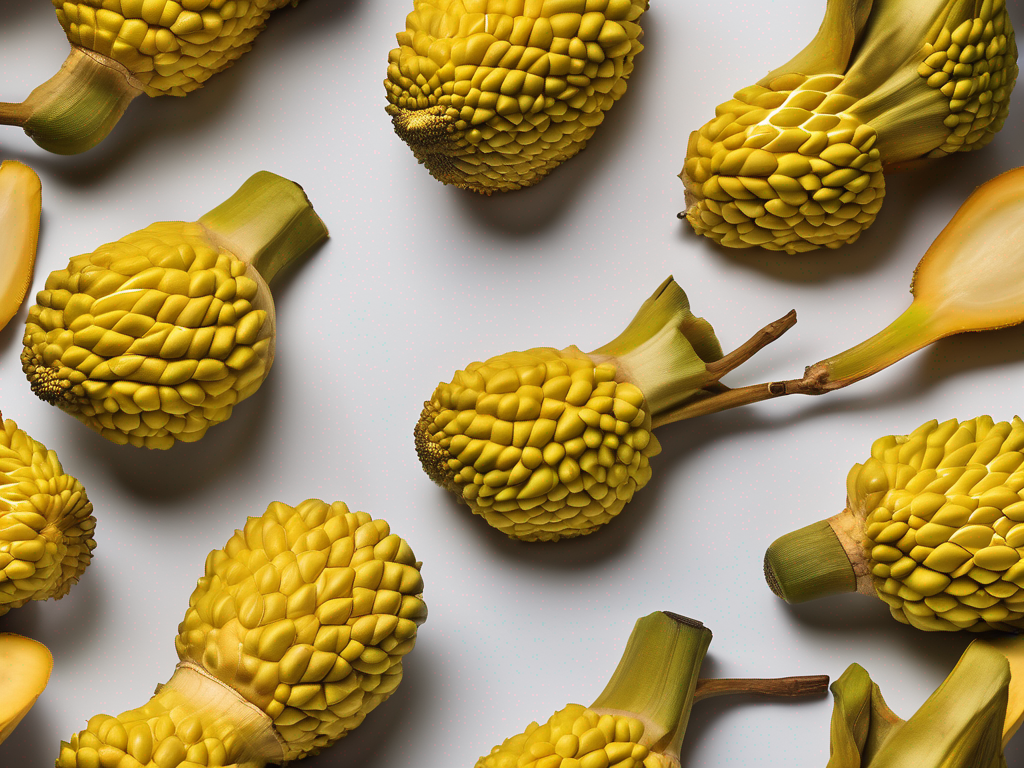
Preserving Jackfruit for an Extended Period of Time
Get Your Free Food Safety Cheat Sheet
30 most common foods with instant answers. Print it and stick it on your fridge—completely free!
Preserving Jackfruit for an Extended Period of Time
Jackfruit, also known as the jackfruit, is a tropical fruit that is not only delicious but also packed with nutrients. However, due to its perishable nature, preserving jackfruit for an extended period of time can be a challenge. In this blog post, we will explore various methods and techniques to help you preserve jackfruit so you can enjoy this exotic fruit year-round. (Jackfruit)
Understanding Jackfruit
Before diving into the preservation methods, it's essential to understand the characteristics of jackfruit:
Characteristics of Jackfruit:
- Large size and spiky exterior
- Sweet and tropical flavor
- Contains seeds and edible flesh pods
- High in fiber, vitamins, and minerals
Selecting the Right Jackfruit
When it comes to preserving jackfruit, selecting the right fruit is crucial. Here are some tips for choosing the best jackfruit for preservation:
Tips for Selecting Jackfruit:
- Look for a ripe jackfruit with a strong aroma.
- Press the fruit gently to ensure it's firm but not too hard.
- Check for any signs of mold or spoilage on the exterior.
Preparation for Preservation
Proper preparation is key to successful jackfruit preservation. Follow these steps to prepare the fruit for storage:
Steps for Preparation:
- Wash the jackfruit thoroughly under running water.
- Cut the fruit into manageable pieces, removing the seeds and fibrous parts.
- Blanch the jackfruit in hot water for a few minutes to preserve its color and texture.
Methods for Preserving Jackfruit
There are several methods you can use to preserve jackfruit for an extended period. Let's explore some popular techniques:
1. Freezing:
- Cut the jackfruit into small pieces and remove the seeds.
- Place the pieces in airtight containers or freezer bags.
- Label the containers with the date and store them in the freezer.
- Frozen jackfruit can last up to 6 months.
2. Canning:
- Prepare a light sugar syrup or brine solution.
- Pack the jackfruit pieces into sterilized canning jars.
- Fill the jars with the syrup or brine, leaving some headspace.
- Process the jars in a water bath canner according to the recommended time.
3. Drying:
- Slice the jackfruit into thin strips and remove the seeds.
- Arrange the slices on a drying rack or dehydrator tray.
- Dry the jackfruit at low heat until it becomes leathery and dry.
- Store the dried jackfruit in airtight containers in a cool, dry place.
4. Pickling:
- Cut the jackfruit into small pieces and blanch them briefly.
- Prepare a pickling solution with vinegar, salt, sugar, and spices.
- Pack the jackfruit pieces into sterilized jars and cover them with the pickling solution.
- Seal the jars and store them in a cool, dark place.
Safety Precautions
When preserving jackfruit, it's essential to follow proper safety precautions to prevent foodborne illnesses. Here are some safety tips to keep in mind:
Safety Tips:
- Wash your hands and utensils thoroughly before handling jackfruit.
- Use clean and sanitized containers for storage.
- Check canned or preserved jackfruit for any signs of spoilage before consuming.
- Follow recommended processing times and methods for canning and pickling.
Conclusion
Preserving jackfruit allows you to enjoy this tropical fruit year-round and avoid wastage. By following the methods and safety precautions outlined in this blog post, you can successfully store jackfruit for an extended period of time. Experiment with different preservation techniques to find the method that best suits your taste preferences. Enjoy the flavors of jackfruit anytime by preserving it using the methods discussed above. (Jackfruit)
Authoritative Food Safety References
These agencies and university labs inform every tip and health precaution we publish.
USDA FoodKeeper – Cold Storage Guidelines
Official refrigerator, freezer, and pantry timelines maintained by the U.S. Department of Agriculture.
Visit USDA FoodKeeperFDA Produce Safety Rule & Grower Guidance
Field-to-fridge handling practices that prevent contamination of fruits, vegetables, and leafy greens.
Visit FDA Produce SafetyCDC Foodborne Illness Prevention Hub
Surveillance-backed guidance on pathogens, symptoms, and steps to reduce foodborne illness risk.
Visit CDC Food SafetyUC Davis Postharvest Technology Center
University research detailing optimal storage atmospheres for produce after harvest.
Visit UC Davis PostharvestPenn State Extension – Home Food Preservation & Safety
Peer-reviewed extension bulletins on safe canning, chilling, and reheating practices.
Visit Penn State ExtensionGet Your Free Food Safety Cheat Sheet
30 most common foods with instant answers. Print it and stick it on your fridge—completely free! Want more? Upgrade to the complete guide with 70+ foods.
Scan your food directly and get instant safety info using our AI-powered camera feature.